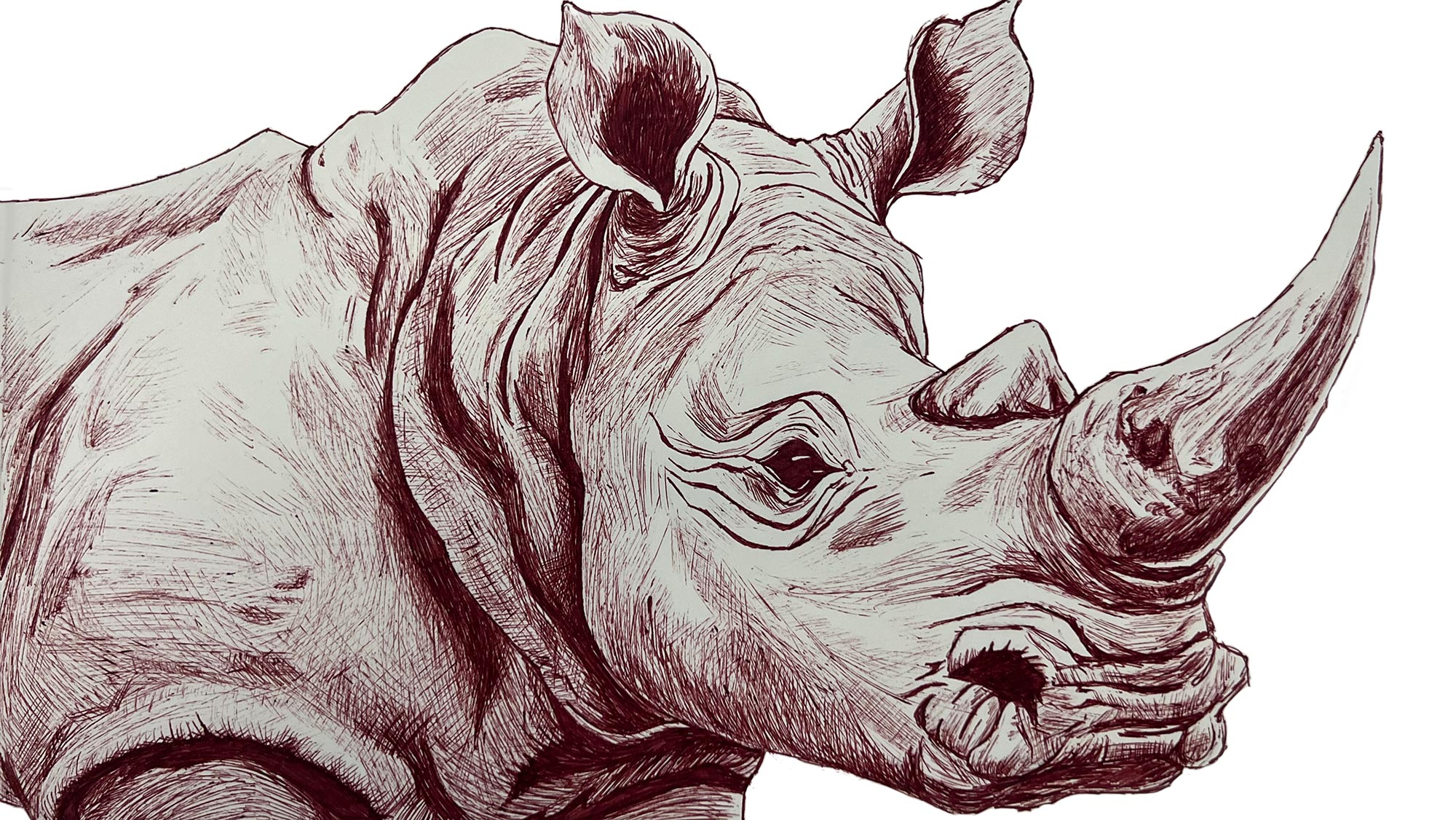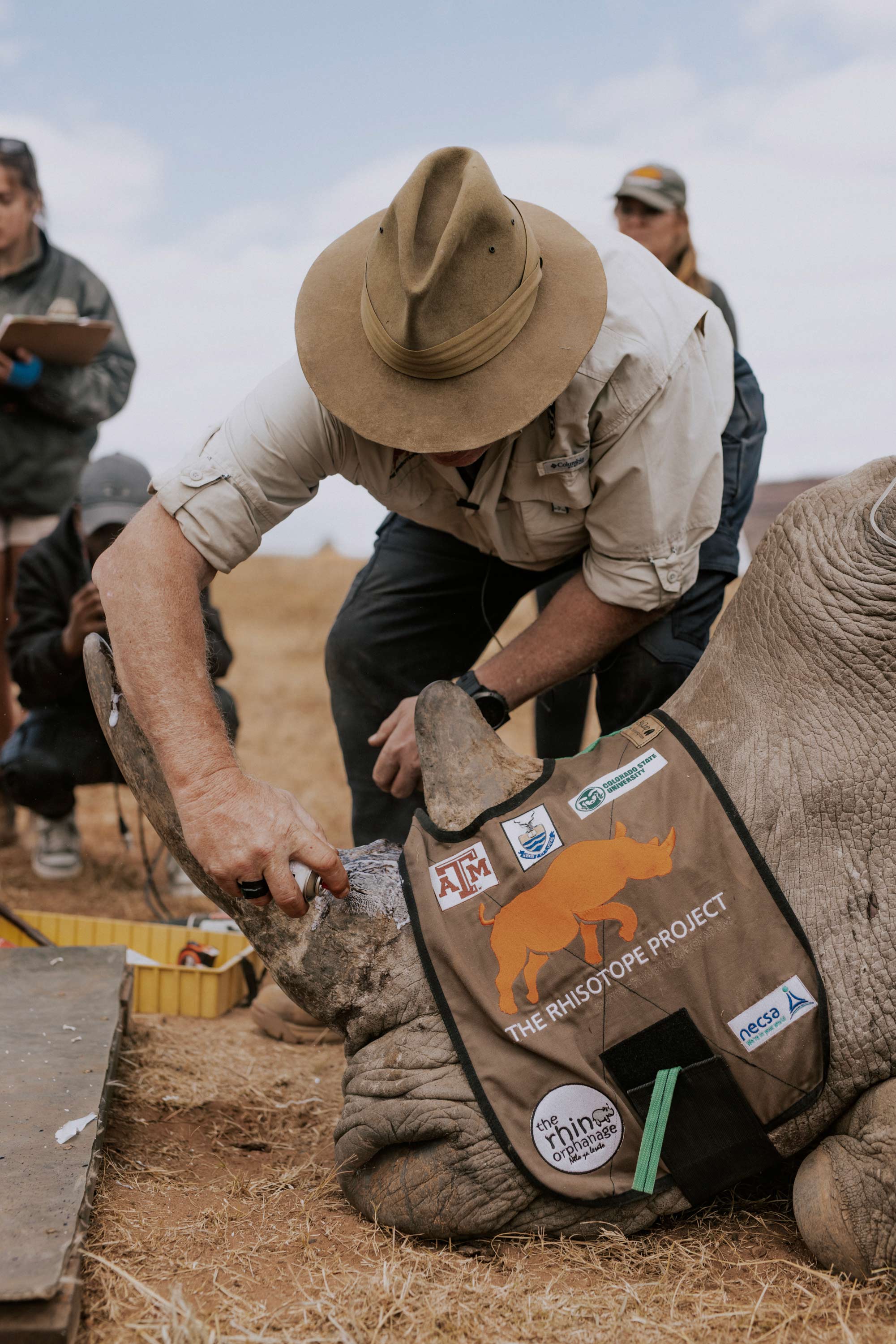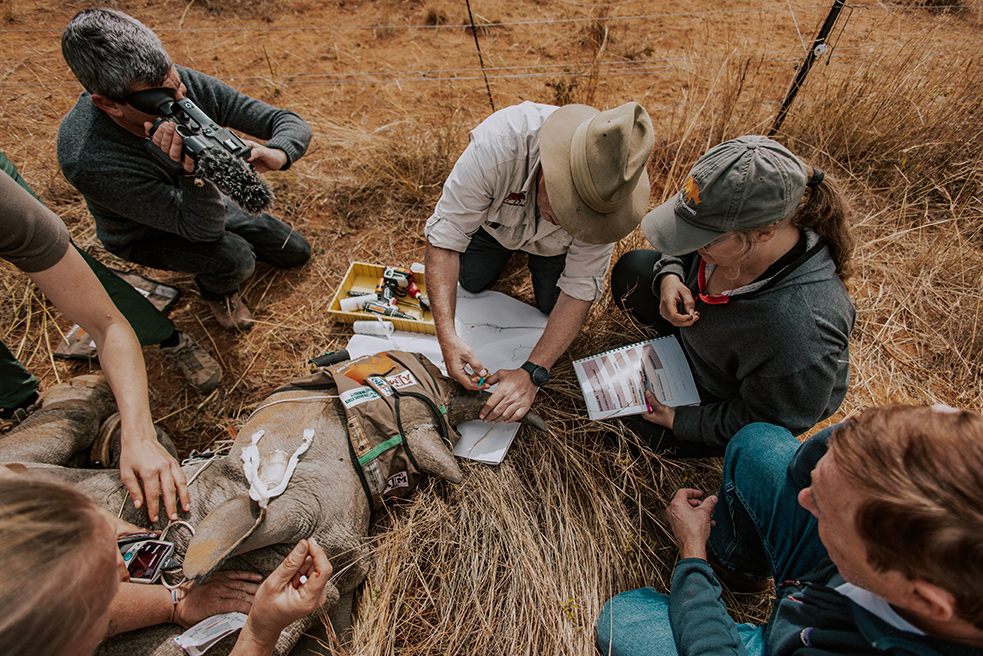
Thanks to a collaboration between Texas A&M University, University of Witwatersrand, Colorado State University, and other collaborators, the Rhisotope Project, a South African organization dedicated to rhinoceros protection, is pioneering the incorporation of radioactive atoms to safeguard wildlife conservation.
The Rhisotope Project involves inserting a radioactive source into the horns of rhinoceroses to deter poaching. Since radioactive rhino horns would be less appealing to consumers, it makes them less tempting to poachers. Additionally, the radioisotopes could be detected at ports of entry with existing radiation detection technology, making it easier to find the horns if they are being traded internationally, according to James Larkin, a professor at the University of Witwatersrand in Johannesburg, South Africa.
The idea originated when Larkin collaborated with people looking for ways to make rhino horns less attractive to repel poachers. As a radiation professional, Larkin thought radioactive isotopes could be useful.
“It was one of those three o'clock in the morning thoughts: ‘What if I put a small amount into the horn?’” Larkin said. “I realized we could probably find that sweet spot where the dose was small enough to not harm the animal, but big enough to set off a detector.”
In 2020, Larkin met Jessica Babich, an anthropologist and sector consultant, who could introduce this idea to the conservation community.
“It's all about science saving rhinos, rhinos saving people, and people saving rhinos — a beautiful trilogy of possibility and success,” said Babich, who became the chief operating officer of the Rhisotope Project.
It's all about science saving rhinos, rhinos saving people, and people saving rhinos — a beautiful trilogy of possibility and success.
Texas A&M nuclear engineering professor Craig Marianno has known Larkin for many years through involvement in the International Atomic Energy Agency (IAEA). During an IAEA meeting, Larkin mentioned the project and its challenges, and Marianno offered to help. Marianno’s graduate student Jordan Hillis began working on the project in 2022.
Both Hillis and Larkin investigated what level of radioactive material would be safe for a rhino. They worked independently using different approaches so that they could validate each other’s results.
Hillis created a detailed computational model of a rhino head and calculated the potential doses. She is currently publishing those results from the project.
“Our first priority was to verify that it is safe to put this in the animal. The last thing we want is to harm it in any way or affect the characteristics of the horn and what makes it so unique,” Hillis said.
Finding the level and type of radiation that could cause radiation sickness or damage horn-producing cells was a challenge, according to Marianno. Once they understood the risk of radiation, they could figure out if a safe radiation source could still be detected.
This hard work to assess dose levels culminated in treating 20 black and white rhinos at The Rhino Orphanage in South Africa’s Limpopo province. It was a hectic week for the team in South Africa, Larkin said. They treated seven animals on July 25 and 10 more on July 26. The following day, they treated three additional animals. They worked with a nearly three-ton bull rhino and followed two adult bull rhinos with a helicopter into denser vegetation.

“It's exciting, tiring, dusty, hot, sweaty, an adrenaline rush, and it has been a roller coaster intellectually,” Larkin said. “There were nights where we were worried, is this going to work? Now I've put my neck on the block and said, ‘let's try it.’”
Now that flesh-and-blood animals are involved, the next step for the Rhisotope Project is monitoring the 20 rhinos to confirm Hillis’ and Larkin’s models and ensure that the radioisotopes are not harmful. Hillis is also using simulations to determine the best radiation sources for detection travel boundaries. She will also experiment with real radiation portal monitors and take physical measurements on some existing rhino horns.
An Aggie student’s global impact
For a doctoral student’s research project, Larkin said Hillis’ work on the Rhisotope Project is notable because it has had an end goal and a tangible effect.
“When you do master’s research or PhD, it's more pure research,” Larkin explained.
“This is very much applied research that is focused on a very specific outcome.”
Now that the project is out of the lab, Hillis has enjoyed seeing it receive so much attention in the news and the research community. Her friends have been sending her links to stories about the Rhisotope Project as they see them on social media.
Another exciting moment for Hillis was presenting the in-progress research at last year’s Health Physics Society conference with Marianno and Tom Johnson from Colorado State University, another collaborator on the project. The team presented their papers during a special session dedicated to the Rhisotope Project on the first afternoon of the conference. Hillis said they were surprised when they found themselves speaking to a packed room.
“It was nice, as a student and a researcher, to know that my work is really interesting to people in the field,” Hillis said.
Hillis, who was originally interested in biomedical engineering, loves that her project incorporates both medicine and nuclear engineering. The project also pushed her to thoroughly understand every aspect of the project. This was crucial for communicating with agencies and interacting with experienced colleagues from different fields.
“It makes me a stronger researcher to not only understand the nuclear engineering, but the biology and the chemistry,” Hillis said. “Working with the U.S. Customs and Border Protection, I can't be a naive student in a meeting and not know how their operations work. I’ve been challenged to understand so many more disciplines and real-world ‘boots-on-the-ground’ applications than I ever thought I would.”
Hillis, who plans to graduate with a doctorate next year, never expected to be involved with such impactful research that combines nuclear engineering and wildlife conservation.

“No one associates nuclear engineering with animals or conservation projects,” she said. “To get a public eye on this and get other people interested in different applications of nuclear engineering is getting the best of both worlds.”
People saving rhinos, rhinos saving people
As megaherbivores that shape the landscape, rhinos are crucial to their ecosystem. Similarly, the black-market trades that fuel poaching impacts society, so reducing poaching also helps people. Wildlife trafficking is one of the major elements of organized crime, along with weapons, drugs, and human trafficking, and these elements often go together.
“A rhino horn is the most valuable false commodity on the black market,” Babich said. “If we can eliminate that from the market, it will hopefully have a significant impact on black market crime. A rhino being poached in South Africa has an effect on every single citizen, no matter where you are in the world, because of what it represents on the black market.”
In the future, the project intends to commercialize this method to protect rhinos on reserves or private land, Babich said. They also hope to replicate this approach for other commonly poached animals, such as pangolins, according to Larkin.
The Rhisotope Project will soon ramp up its other philanthropic efforts. This includes providing feminine hygiene products to girls attending school, building gardens at schools to provide fresh food and learning opportunities, and bringing water to communities.
“That means households have water, schools have water, and livestock has water,” Babich said. “When you put a big rhino onto that tank where the water is stored, people come out of their homes every day and see the rhino: ‘The rhino is saving us, and so we need to save the rhino.’”
The threat to rhinos may not be as visible and ever-present in the United States but work like the Rhisotope Project helps protect the environment and culture of South Africa, Hillis explained.
“In South Africa, it is in front of their face every day: it's something that they acknowledge and are trying to conquer,” Hillis said. “If there's a way to not only help another country but help an entire species all over the Eastern hemisphere, that is remarkable.”